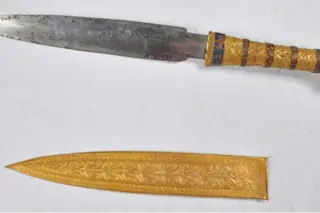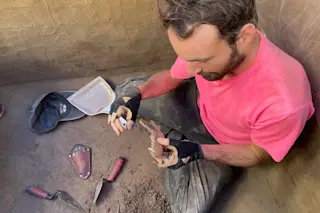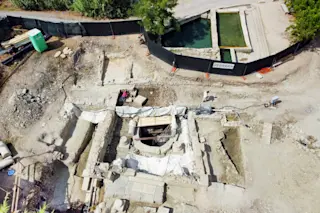King Tut's dagger, the blade is made of meteoric iron. (Credit: Daniella Comelli) Looks like King Tut's space dagger wasn't so special after all. The legendary Egyptian pharaoh was found last year to have been buried with a dagger forged from a meteorite, a truly cosmic artifact fit for a king. Well, as it turns out, pretty much everything made of iron from that period came from fallen space rocks, taking the "wow" factor down a few notches. That's not to say that artifacts of meteoric origin are commonplace — they're not — but in the Bronze Age, if you were working with iron, it's a safe bet that it fell out of the sky.
Albert Jambon, a researcher at the University Pierre and Marie Curie in France surveyed a collection of Bronze Age iron artifacts with a portable x-ray fluorescence scanner, the same technique that let researchers determine the ...














